Donald Trump Wants To Get Men On The Moon By 2024, NASA Isn’t That Optimistic
President Trump says he wants to see men back on the Moon by 2024, but NASA thinks it's going to take longer than that.
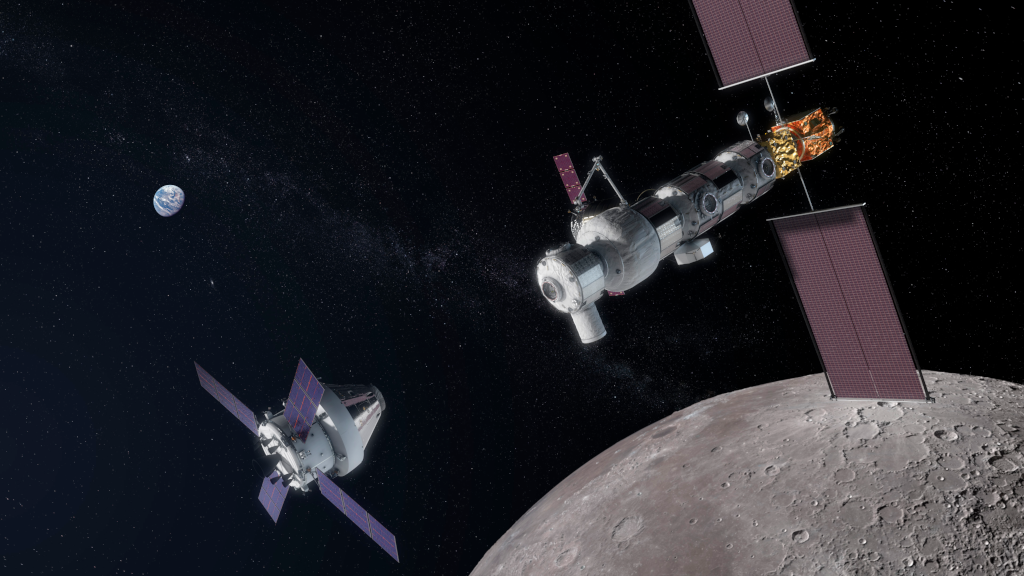
President Trump has been pushing a plan for NASA that would aim for American astronauts to return to the Moon by 2024, close to the end of what would be his hypothetical second term, but the odds we can pull that off are fairly slim:
Last week, the White House sought to add $1.6 billion to NASA’s budget for next year as a “down payment” for this accelerated push for the moon.
And yet, the administrator of NASA, Jim Bridenstine, has not talked directly with President Donald J. Trump in the past couple of months about this goal.
“Not on the 2024 agenda,” Mr. Bridenstine said in an interview last week when asked if they had discussed the new plan. “I’ve talked to the vice president.”
Although Mr. Trump signed a directive in December 2017 that set the moon as the next destination for NASA astronauts, he has barely talked about the moon publicly. At rallies, he has been more likely to tout the Space Force, a proposed new military branch.
The apparently scant attention by the president is just one hurdle that Mr. Bridenstine and NASA are facing in trying to send people back to the moon — in a program they’ve named Artemis — for the first time since 1972.
Reaction in Congress has been lukewarm, especially among Democrats who may be reluctant to give billions of dollars to NASA when the Trump administration is seeking deep cuts in scientific research.
In addition, the history of space projects, big and small, is that they are almost never completed on time.
These factors seem to make it unlikely that astronauts will set foot on the moon during a second term of Mr. Trump’s presidency, if he is re-elected. Still, pursuing this goal could help speed the status quo at NASA. That might make it more likely the agency could make the original 2028 timetable, or even move it up a year or two.
Vice President Mike Pence has been leading the administration’s space policy. As chairman of the National Space Council, which coordinates off-planet issues among federal agencies, he has spoken of the moon mission in sweeping and urgent language.
“Failure to achieve our goal to return an American astronaut to the moon in the next five years is not an option,” he said in March when announcing the 2024 deadline
This was a swerve for NASA.
In mid-March, the Trump administration’s budget request to Congress still followed a timeline for reaching the moon in 2028.
But a week later, Mr. Pence told Mr. Bridenstine that the White House wanted to accelerate the moon landing to 2024, setting off a rush of revisions, Mr. Bridenstine said.
NASA officials have not disclosed the total budget for a 2024 moon landing, only that they expect the cost to rise for at least the next couple years.
“When we start building hardware, it becomes more expensive,” Mr. Bridenstine said. “In the next year, it’s going to be more. The year after, it’s going to be more, and then it should start coming down.”
Few members of Congress, Republicans or Democrats, offered enthusiastic endorsements.
“We need to know how much this program is going to cost,” Rep. Kendra Horn, an Oklahoma Democrat who chairs the House subcommittee on space and aeronautics, said in an interview
To a large degree, of course, Trump is using the idea of returning to the Moon while he’s still President (if he’s re-elected) to boost his own ego, just as he has done with other things that he really isn’t responsible for. The reality, though, is that it seems pretty clear that the amount of money that the Administration has allocated to NASA in its current budget is most likely nowhere near sufficient to accomplish the goal that he is setting. This is especially true given the fact that even this amount is already facing resistance on Capitol Hill so it’s unlikely that the final NASA budget will be as big as Trump wants it to be. Finally, it’s worth noting that the idea that we’ll be back on the Moon in just five years ignores the fact that it took NASA eight years to get to Apollo 11. While it arguably shouldn’t take that long to repeat the effort since we know a lot more now then we did in the 1960s, the five year timeline does not take into account either the time to test the new technology that would be used in the program, nor does it take into account the probability of accidents and other setbacks that push the timetable back. Therefore, I would not place any bets on there being men on the Moon in 2024.
This mission to the Moon is, of course, meant to be the first step on what would eventually be a trip to Mars, which has been the goal of NASA for some time now. That is certainly a worthy goal to achieve, but let me suggest an alternative. Rather than focusing primarily on manned spaceflight, it seems to me that we ought to be focusing our resources on unmanned spaceflight and the probes that we have sent out beyond the stars that have already resulted in greater expansions of scientific knowledge than the manned program has.
Pioneer 10, Voyager I. and Voyager II, for example, are unmanned probes that were originally sent in the 1970s to explore planets such as Jupiter and Saturn. Since then they have continued their journeys to the point where they are now interstellar craft and, at least in the case of the Voyager probes, still transmitting data back to Earth, Other unmanned missions have visited not just Jupiter and Saturn, but also Neptune, Uranus, and even Pluto. We’ve sent a countless number of probes to orbit and land on Mars itself, and the Soviets even sent probes that provided on-the-ground photos of the forbidding environment of our neighbor Venus. Even Mercury and the larger asteroids in the Asteroid Belt have gotten their own terrestrial visitors, Finally, of course, there are the contributions to science that have been made by orbiting platforms such as the Hubble and Kepler space telescopes, both of which have performed above and beyond the call of duty. In the future, there are plans to put similar telescopes even further from Earth where their ability to see to the beginnings of the universe itself will be even more advanced, All of this was accomplished by the unmanned program, and much more is possible in the future.
All that being said, I don’t discount the value of a manned spaceflight program or the wonder that it would create if we were to return to the Moon and eventually land on Mars. While sending probes is certainly useful, it’s not the same as actually going someplace in person, and one cannot deny the excitement that a manned program creates. Finally, humanity has had the inherent desire to explore the unknown from the time that the first man took off on the first boat to reach an unknown land. Sending men to explore the universe beyond Earth is just the next step in that direction. However long it takes, a return to the Moon and a mission to Mars will be the first step in what will hopefully one day be the expansion of humanity beyond the bounds of Earth, whether that living in low-Earth orbit, on the Moon or Mars or traveling off into the unknown. Whether that process begins again in 2024 or later, it will begin again.
On a final note, I do have to note that the name that NASA has chosen for the proposed plan to return to the Moon is a nice callback to the original push to get to the Moon. As you may recall, the first manned spaceflight program was called Mercury, named for the Greek God known as the “messenger to the gods” as well as being the God of travelers. The main purpose of the Mercury program was to establish a manned spaceflight program that was reliable in response to the Soviet Union. Mercury was followed by Gemini, named at least in part on the twin Greek Demigods Castor and Pollux. The main goal of the Gemini program was to build on the advances of Mercury and to test designs of spacecraft and spaceflight techniques, such as orbital docking, that would be utilized in the planned missions to the Moon themselves. Mercury and Gemini, of course, led to Apollo, named after the Greek God of light, music, and the sun, which placed a total of twelve men on the Moon between 1969 and 1972. Artemis, the name of the new program, is the Greek Goddess of hunting, wild animals and the wilderness and the twin sister of Apollo. Hopefully, they’ll keep the name no matter how long it takes to get back to the Moon, because it seems like the right name for the next step in human spaceflight.
Photo Credit: Artist’s Conception of Project Artemis space vehicles via NASA

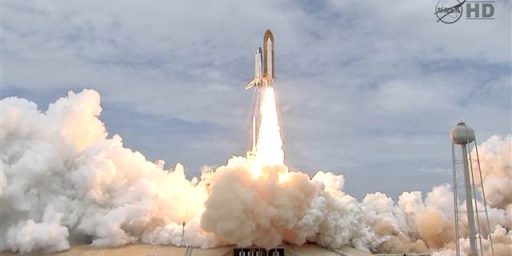
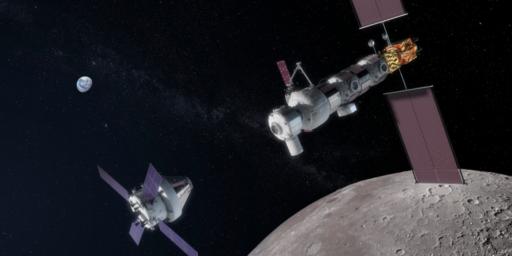
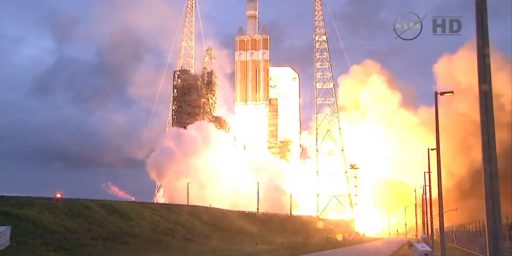
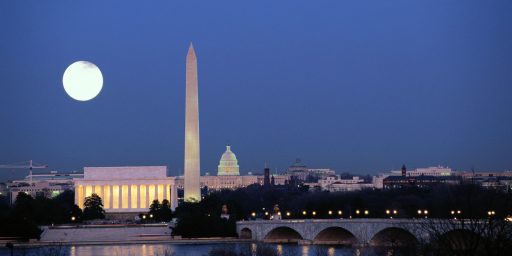
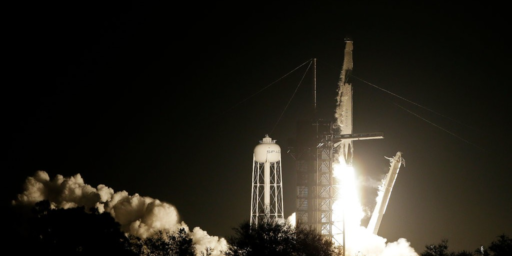
Even when he stumbles into a good thing…he can’t help but go about it in a fuqed up way.
Sure…let’s rush space exploration…what can go wrong?!?!?
Umm, Mercury is a Roman god. the Greek god is Hermes 😉
Yeah, I know they’re the same. He was also The Flash, often depicted with wings on his feet. The Olympians had other messengers,like Iris.
Back on topic, there’s no way anyone will be going tot he Moon in 2024, and I wouldn’t bet on NASA getting people there in the 2020s at all.
Apollo happened because:
1) Congress was willing to throw massive amounts of money at NASA. It was a massively expensive undertaking, costing more than the Manhattan Project according to several sources.
2) There was a push to show the Soviets up, and to demonstrate tot he world who was head of whom in space. Other technological developments took place at the time, like the Concorde, or the North sea oil platforms. But it’s Apollo that most people remember.
3) For once, the incoming administration did not mess with the previous administration’s space plans. Twice. First Johnson left Kennedy’s plans in place, then Nixon did. But then Nixon nixed the post-Apollo plans NASA had, keeping only the Space Shuttle. Since then we’ve seen things like Bush the younger approving or setting up the Constellation program, to be canceled by Obama, and more along such lines.
Points 1 and 2 are unlikely to recur. Point 3 is unlikely to go away. If you expect manned space travel, look to SpaceX, Blue Origin, etc.
This. A thousand times this. NASA’s biggest problem for the last twenty years has been each Administration changing their goal. It’s impossible to get a big program rolling under those circumstances.
I’m not sure a moonshot is the best use of our resources right now. If I were in charge my priorities would be:
1) Maintain funding for NASA astrophysics (note: I’m paid out of NASA astrophysics grants so may not be entirely 100% objective here).
2) Pour money into detected Earth-crossing asteroids and developing methods to deflect them if necessary. An asteroid hit is extremely unlikely but could be catastrophic. We could at least spend the kind of funds we spent on GWOT dealing with it.
3) Develop methods to cut the cost of getting things into orbit. This is by far the biggest expense for anything space related. Any progress on this front would pay off massively down the road. I wouldn’t even look askance at crazy ideas like space elevators, if we could develop the materials.
From that, you can flow to bigger and better things — Mars, the Moon, the asteroid belt. But those should be the top priorities right now.
Let’s build a city under the ocean too. Equally useful.
@Hal_10000:
1) Yes.
2) Yes.
3) Yes.
No one does strategy anymore.
@Hal_10000:
I’m convinced space travel will explode when we build a space elevator. Until then, SpaceX, Blue origin, Rocket Lab, Orbital Sciences, and others, even Virgin Galactic, are working on just that, largely through reusability of used components, rather than making them disposable.
SpaceX claims to have made good progress here. Undoubtedly they’ve reused first stage boosters. This will help, but we have to see how much. Fuel is also still a huge expense.
I know who I’d like to send first!
The moon? What happened to Mars?
Elon Musk – please call the White House.
@Kathy:
Iris West was a messenger of the Gods?
@Hal_10000:
Some of us are rooting for the asteroid.
@Gustopher:
I had to Google that.
Iris is an anagram of Siri. Coincidence?
My company is still keeping an eye on the production of ultra-strong materials for a Space Elevator. Nanotubes turn out to be too springy and you don’t want your Space Elevator acting like a bungee cord. One candidate material is what is known as pillared graphene, if we can ever figure out how to make it–a friend of mine and I have some ideas.
I’m about to head off to ISDC in about a week, so will see what the scuttlebutt is among the engineers.
@grumpy realist:
Cool. I mention the classic Space Elevator because it’s the only such crazy cool idea I can comprehend. But there are other means of achieving similar ends.
Interesting, why it’s so important to take a man to the moon. With modern technologies and satellites isn’t is faster, easier and safer to create some virtual reality simulation of the moon to discover and study? This VR company – skywell.software/virtual-reality-development, with all needed data, can make Donald’s dream come true much more faster 🙂